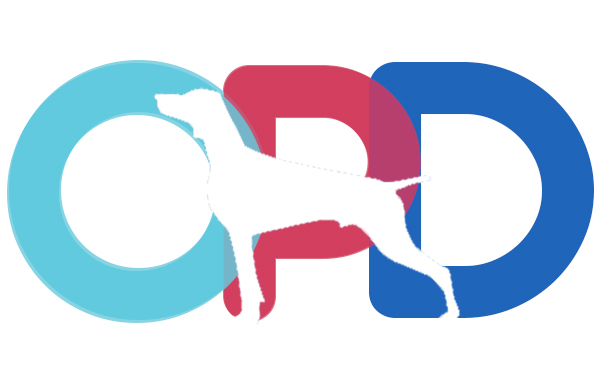by Kate
(Granby, CO)
Back in May of this year, I adopted Jackson. He is a 15 yr old mini smooth haired Dachshund. He weighs 11.2 lbs. He has a great attitude and appetite to match.
He was surrendered to a shelter November of 2012. His person had died and a family member tried to keep him. Apparently he was peeing on the couch and the carpet. A rescue group transferred him to no kill shelter in December of 2012. He remained there until I adopted him in May.
He does have peeing issues in the house, which I manage through using pads in his kennel (the door is not attached), on the floor and on the couch. He has a ramp for the couch. He can sometimes go all night without peeing.
When he is up, he probably goes every 2-3 hours. I try to get him out to go before he uses a pad. I often wonder if he goes so much while I am home because, he gets a treat for going outside and for going on a pad. They all aren’t productive.
Fast forward to September 2014. He was getting bladder infections frequently. It was brought to my attention that in male dogs this is a sign of bladder/kidney stones.
He had his teeth cleaned at the end of September and I asked my vet to please X-ray is bladder. The X-rays showed stones in his bladder and what looked stones in his kidneys. He had an ultra sound done the first week of October at a different vet. The ultra sound not only confirmed the stones in both areas, it also showed a growth attached to the wall of his bladder.
The vet doesn’t think it is cancerous based on the way it is formed and attached to the wall. They took a urine sample via a tube inserted into his penis, and sent it out. It came back with no crystals or signs of infection. A previous urine sample I got from him showed a pH of 8.
I discussed laser surgery options and the vet suggested we go with the Royal Canin SO diet to see if the stones could be dissolved. Surgery was not advised because of the existing stones in the kidneys. The bladder stones could be removed, but if kidney stones moved to his bladder, we’d be back to square 1.
Up until last week I was adding a 1/4 tspn of D-Mannose by NOW products to his food. I keep seeing supplements with 75mg of D-Mannose along with Cranberry extract. The dosage on my bottle has 1tspn =2000mg. So the 1/4 tspn was way too much even though every thing I read on D-Mannose states an overdose situation won’t occur.
Last week we had the 1 mo. follow up X-ray for the stones and nothing has happened….I will not put him through surgery because of the reasons listed above, and because of his age. I do realize an emergency situation could change all that. There are 3 stones that are clearly visible in the X-ray. Two measure 1/2″ the other 1/2″.
Is there an herb or remedy that can dissolve them?
An important FYI, 2 weeks ago, Jack was eating some dry SO kibble and bit into a piece that sounded extra loud. The next morning he had some mouth bleeding. I called the vet and made an appt. He ate his breakfast with no trouble. During the 3 hours I was at work,the bleeding started up again. The vet gave him a sedative to lower his blood pressure, that also helped stop the bleeding.
I mentioned supplements I give him-10mg Coq10 by vetriscience, 1/2 tablet of Nature’s Bounty ProBiotic Acidophilus and fish oil. The fish oil was an immediate red flag to my vet. She consulted a book and confirmed her concern, fish oil can interfere in the body’s ability to produce blood clots if given too much.
Guilty as charged.
I was breaking open a 1200mg capsule and putting it on his food once a day. I had given the same dose for years per a vet’s instructions for an 18lb standard Dachshund I had. It never occurred to me there would be a problem.
My vet did a complete CBC and while the count was a little low, everything else seemed fine. She examined his mouth and couldn’t find any type of cut. She did notice a tooth that was fragmented. Since he had his dental the month before and nothing was noted, she is thinking the kibble might have caused the damage. He stayed at the clinic until I picked him up at 5PM. There was no more bleeding until the following Monday.There was a blood clot and a little blood on a pee pad.
Back to the vet- extensive blood work done and sent out, results were fine. His mouth doesn’t seem to bother him at all. I’ve put him back on Merrick and Nutrisca wet.
Comments for Dog with Bladder & Kidney Stones: Holistic Treatment | ||
| ||
| ||
| ||
| ||
| ||
| ||
| ||
| ||
| ||
| ||
| ||
| ||
| ||
| ||
| ||
Click here to go back to the Ask a Vet Online Library of questions.
Do you believe in holistic pet care? If so, please tell your friends about us. Thank you for supporting our efforts!
Also see…
- Back to Dog Health Problems Symptoms / Dog Illness Signs Symptoms / Natural Dog Remedies
- Back to 10 Best Dog Food Options / Dog Food Ratings / Buy Dog Food Online
- Back to Conventional vs. Holistic Veterinarians
- Back to Organic Dog Supplies Online
- Back to Pet Friendly Airlines / Pet Friendly Travel
- Back to Organic Pet Digest Natural Dog Care Home Page



